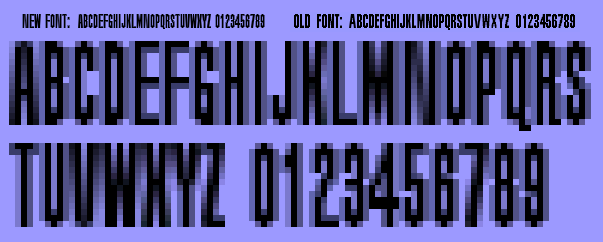I'm trying to design a new base font for my LCARS system as a possible replacement for the existing 14-point font used for labels, etc. It has to be well formed in LCARS style yet sufficiently legible. Here are four versions of my first attempt and a sample of the old base font. This has nothing to do with TrueType, etc., and it's only for display on monitors.
I think the fourth version is the most legible, even though the differences among them are slight. Anyway, I thought the Art forum here would be the best place to get advice on this.

I think the fourth version is the most legible, even though the differences among them are slight. Anyway, I thought the Art forum here would be the best place to get advice on this.






